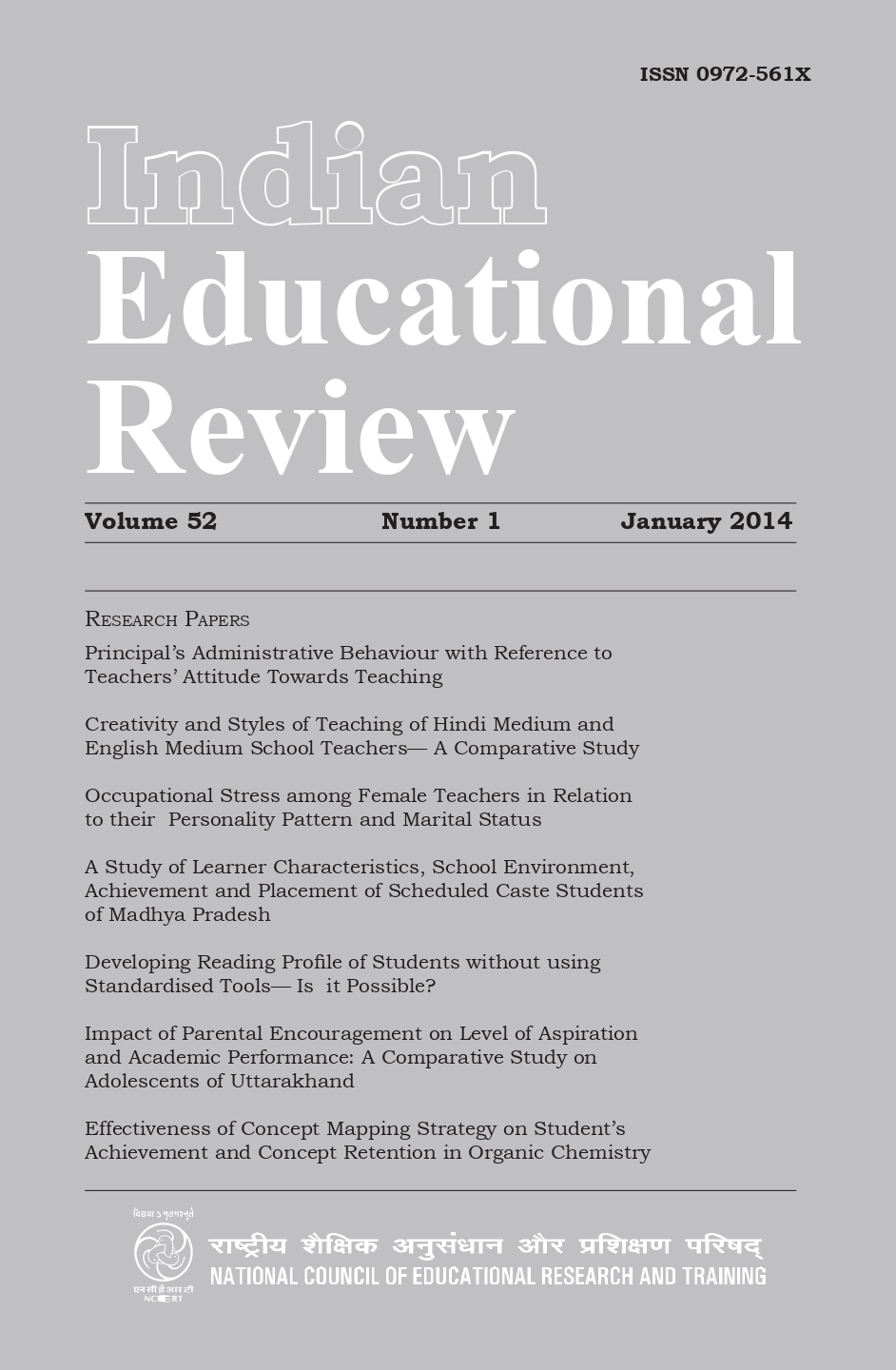Occupational Stress among Female Teachers in Relation to their Personality Pattern and Marital Status
Published 2024-12-31
Keywords
- Occupational Stress Index,
- Robinson (2007)
How to Cite
Abstract
The purpose of this study was to identify individual factors (personality type and marital status) in order to understand why under nearly the same environmental conditions some female teachers suffer much greater levels of occupational stress than others. A sample of 121 female teachers was administered– Occupational Stress Index (OSI) constructed and standardised by Srivastava and Singh to measure the occupational stress and Dhar and Jain’s Type A/B Behavioural Pattern Scale (ABBPS) to know the personality patterns. By applying A×B Factorial ANOVA followed by Scheffe Technique the study revealed: (i) the respondents of personality type A (having the characteristics of tenseness, impatience, restlessness, achievement orientation, domineering and workaholic) are found to have significantly more occupational stress than their type B (characterised by complacent, easy going, non-assertive, relaxed and patience) and not clear type personality pattern counterparts. Moreover, the not clear personality pattern respondents are found to be significantly more stressed than the respondents of type B personality pattern, (ii) the married and unmarried respondents do not differ significantly on the level of occupational stress, (iii) the personality pattern and marital status of the female teachers do not interact significantly to determine their occupational stress. As the personality type A are having the high level of occupational stress, it can be inferred that if they (the female teachers having the personality type A) are any how convinced/motivated to control their this behavioural pattern, they may be able to come down to the moderate level of occupational stress and of course, that will contribute positively to the work performance.

